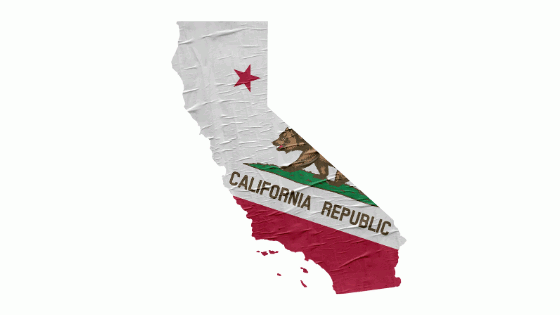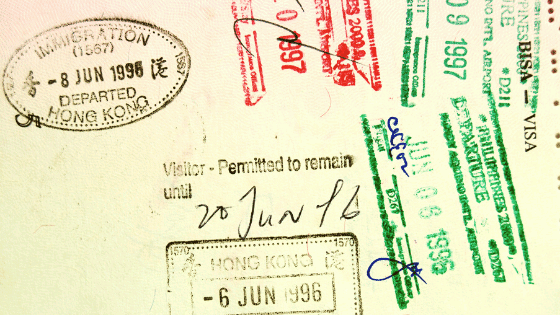
Are there Any Passport Requirements for Cruise Ship Travel?
September 19, 2019
How Long Will it Take to Get a Visa to China?
November 19, 2019What is a Real ID?
The difference between a REAL ID and a regular state-issued ID is that the first one abides for specific federal requirements.
A REAL ID is compliant with the REAL ID act of 2005, which provides stricter rules for issuing driver licenses and other types of identification. REAL ID’s make it possible to board domestic flights and enter certain types of federal facilities like military bases and federal courthouses.
A REAL ID requires applicants to show proof of legal status in the country by demonstrating a US birth certificate, a permanent resident card, a certificate of naturalization, or other valid documents.
The purpose of the act was to address concerns over how easy it was to obtain a driver’s license from the department of motor vehicles. This posed a security risk, and the federal government implemented the REAL ID Act to address these concerns in the aftermath of the September 11 attacks. The new law makes it more difficult to board a domestic flight and enter federal buildings.
A REAL ID driver’s license provides you with the same privileges that a regular license does, but it also meets the federal standards. Both types of ID’s are nearly indistinguishable from each other. They both contain the same standard information and your photo.
However, in California, a REAL ID will have a bear and a star on the upper right-hand corner. A non-REAL ID will state the words, “Federal Limits Apply.” If you have an older driver’s license without either, then assume it’s a standard ID, not a REAL ID.
We will cover more information later on what types of documents you will need to apply for a REAL ID.
Why You’ll Need One Starting Next Year if You Plan to Travel
Beginning October 1, 2020, if you plan to fly domestically, your regular California driver’s license will no longer be good enough to board your flight. You will need a REAL ID or some other form of federally approved identification, such as a passport. If you don’t have either, you will not be able to board your flight.
Currently, most Americans do not have REAL ID-compliant driver licenses or passports. And most Americans are not active members of the military, so they also don’t have military IDs.
This means most of the population is unprepared for the new law scheduled to take effect on October 1, 2020.
Although there is still plenty of time to make an appointment at your DMV office, we can probably expect a backlog and crowded lines as the deadline approaches. Assuming most people will wait until the last minute, the late summer months and the month of September might be a real headache for DMV offices across the nation.
Also, keep in mind that many people will have travel plans the month after the law takes effect as the holiday travel season kicks off with Thanksgiving in November.
How do I get a Real ID in California?
To apply for a REAL ID, you will need to make an appointment at a DMV location. Make your appointment sooner rather than later.
You only need to apply for a REAL ID if you plan to fly domestically or enter certain types of federal buildings. A regular ID or driver’s license will still be sufficient for applying for federal benefits such as social security payments or veterans benefits. You also don’t need a REAL ID for regular driving privileges or to enter other types of federal buildings like post offices.
What Documents Will You Need to Apply?
To apply for a REAL ID, you will need to provide the following documents. Make sure to gather everything in advance and organize it before you arrive at your appointment.
California Real ID Documents Checklist
Another form of ID
You will need to provide another type of identification. This document must contain your actual name (first, middle, and last) and your date of birth. If the document contains a different name, you will have to submit proof of name change. Documentation can include a marriage certificate, a divorce record, or some other type of document that confirms your name change.
The following documents are suitable types of ID:
- A valid US passport or passport card.
- A certified copy of your US birth certificate or birth certificate from your country origin. Hospital records are not acceptable.
- A naturalization certificate for individuals who were born in another country but became naturalized US citizens.
- A valid resident alien card (green card).
- A valid, unexpired foreign passport with an I-551 stamp. An I-551 stamp is temporary proof of permanent resident alien status while you wait for your permanent resident card.
Social Security Card
You’ll have to provide your social security card.
If you do not have one or you lost it, you can provide other forms to show proof of a social security number.
These include:
- A W-2 Form
- 1099 Form from the Social Security Administration
- A pay stub from your employer with your SSN
Proof of Residency
You will need to provide two types of documents to prove residency. These can include documents such as rental and lease agreements, utility bills, mortgage statements, and insurance policies.
If you have nothing to show because your spouse is the named individual on a residency document like a lease agreement, you will have to show proof of your relationship to that person. In this example, a marriage certificate showing your connection to your spouse would fulfill that requirement.
Other types of residency documents include:
- Employment records
- Property title or grant deed
- Post office change of address
- Bank statements
- Voter registration
- Property tax statements
Once you have obtained your documents, you’ll need to make an appointment and apply in person. Keep in mind that all other requirements still apply when applying for a REAL ID driver’s license. This could mean a vision test and re-taking your driver’s ed exam.
Real ID Alternatives
If you don’t have a REAL ID, you will still be able to board your domestic flight by providing any of the following TSA-approved forms of identification.
- A valid US passport or passport card
- Military ID
- Traveler cards issued by the Department of Homeland Security (DHS) such as NEXUS, SENTRY, and FAST
- Permanent Resident Card
- A valid passport from your country of origin
There may be other REAL ID alternatives not listed on this list. However, most people carry a driver’s license and only take their passports when they plan to fly internationally.
Most of us may already be in the habit of only taking our driver’s license anytime we fly domestically. But as of next year, old habits will have to give way to the federal government’s new restrictions on domestic travel.
Also, keep in mind that the new REAL ID requirements will also apply to cruise ship travel. If you’re still in need of a federally-approved type of identification, but don’t feel like applying for a REAL ID, there are ways to get your passport fast.





